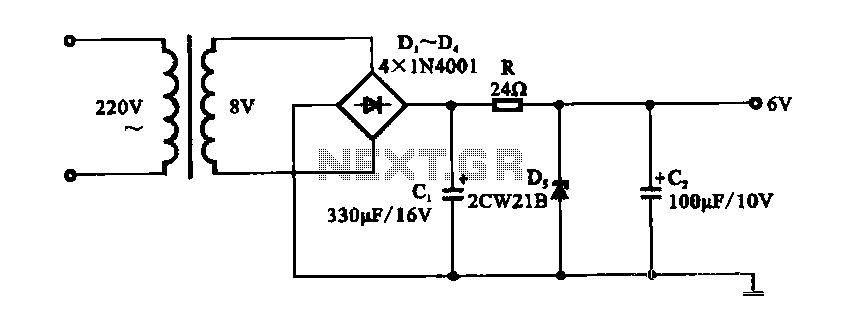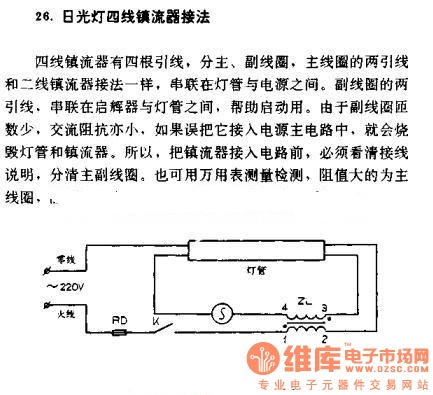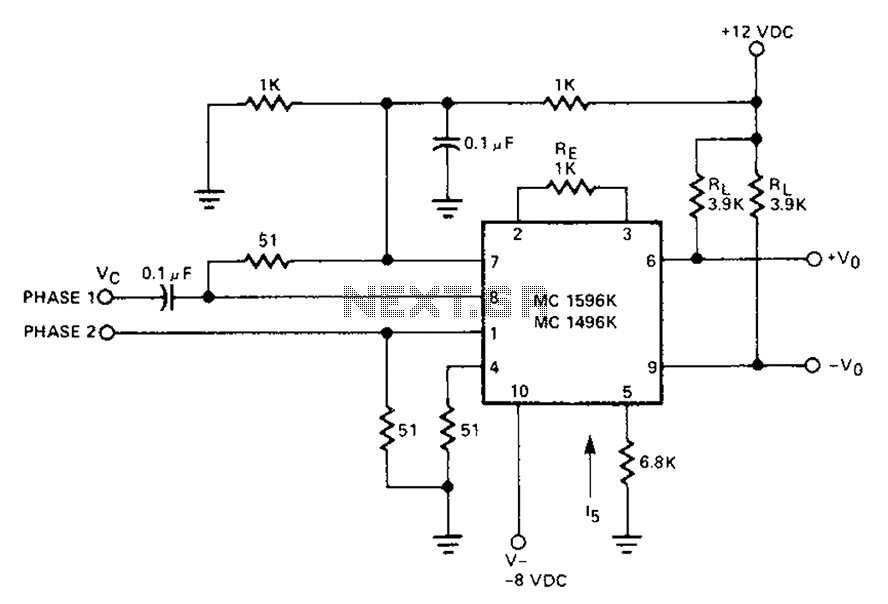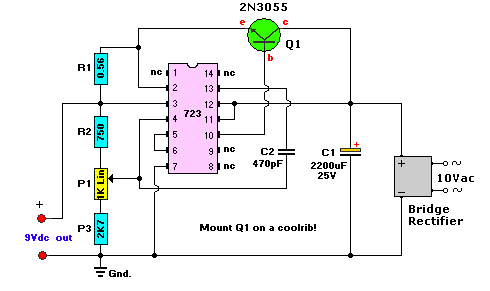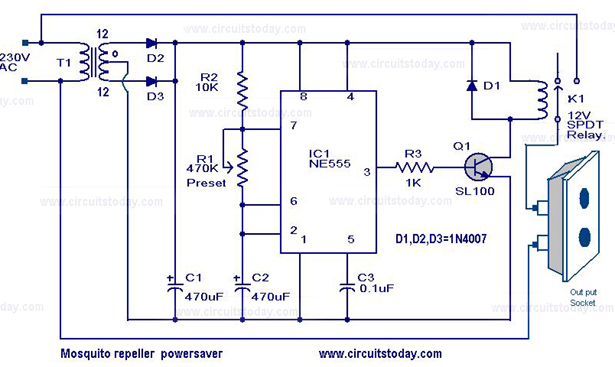
Common-base Colpitts oscillator circuit
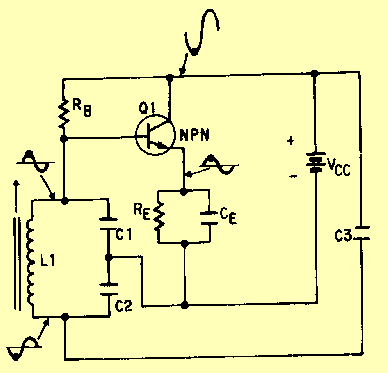
A common-base Colpitts oscillator utilizes a PNP transistor as the amplifying component. In this configuration, regenerative feedback is sourced from the tank circuit and directed to the emitter. The base bias is supplied by resistors RB and RF, while resistor RC serves as the collector load. Resistor RE generates the input signal and functions as the emitter swamping resistor. The tuned circuit comprises capacitors C1 and C2, which are connected in parallel with the primary winding of transformer T1. The feedback voltage is developed across capacitor C2, and either or both capacitors can be adjusted to modify the oscillation frequency. In the common-base setup, there is no phase difference between the collector and emitter signals, eliminating the need to alter the phase of the feedback signal. As the emitter voltage swings negatively, the collector voltage also decreases, resulting in negative charging of C2 at the junction of C1 and C2. This negative charge is fed back to the emitter, increasing the reverse bias on Q1. Consequently, the collector of Q1 becomes more negative, and C2 charges negatively. This feedback continues until the collector cannot become more negative, at which point the primary of T1 acts as a source due to standard tank circuit behavior. As the magnetic field collapses, the tank potential reverses, prompting C1 and C2 to discharge. As C2's negative charge diminishes, the reverse bias on Q1 decreases, causing its collector voltage to increase positively. C1 and C2 will discharge and subsequently charge positively, with the positive voltage across C2 fed back to the emitter as regenerative feedback. This cycle persists until the magnetic field surrounding the primary of T1 collapses, leading to a maximum positive collector voltage for Q1. C1 and C2 will then discharge, reducing the potential at their junction, which increases the reverse bias on Q1, driving the collector negative and causing C1 and C2 to charge negatively, thereby repeating the oscillation cycle.
The common-base Colpitts oscillator is a robust circuit configuration known for its stability and frequency control capabilities. The PNP transistor acts as the core amplifying device, operating in a common-base mode, which is characterized by a low input impedance and high output impedance. This configuration is particularly advantageous for high-frequency applications, as it minimizes the Miller effect, allowing for better frequency response.
The tank circuit, composed of capacitors C1 and C2, plays a critical role in determining the oscillation frequency. The values of these capacitors can be finely tuned, enabling precise control over the output frequency of the oscillator. The interaction between the capacitors and the inductor in the tank circuit creates resonant conditions that are essential for sustained oscillation.
The feedback mechanism is crucial for the oscillator's operation. The regenerative feedback from C2 to the emitter enhances the transistor's conduction during specific intervals of the cycle, promoting oscillation. The relationship between the collector and emitter signals ensures that the feedback is always in phase, a necessary condition for stable oscillation.
During operation, as the emitter voltage fluctuates, the feedback loop continuously adjusts the transistor's biasing conditions, maintaining oscillation. The cycle of charging and discharging of C1 and C2, coupled with the magnetic field dynamics of transformer T1, creates a self-sustaining oscillation that can be harnessed for various applications, such as signal generation in RF communication systems.
The detailed understanding of this oscillator's operation allows for its application in various electronic devices where stable frequency generation is required, including oscillators for RF transmitters, signal generators, and waveform generators in testing and measurement equipment.A common-base Colpitts oscillator using a pnp transistor as the amplifying device. Notice in this version of the Colpitts oscillator that regenerative feedback is obtained from the tank circuit and applied to the emitter. Base bias is provided by resistor RB and RF. Resistor RC is the collector load resistor. Resistor RE develops the input signal and also acts as the emitter swamping resistor. The tuned circuit consists of C1 and C2 in parallel with the primary winding of transformer T1. The voltage developed across C2 is the feedback voltage. Either or both capacitors may be adjusted to control the frequency. In the common-base configuration there is no phase difference between the signal at the collector and the emitter signal. Therefore, the phase of the feedback signal does not have to be changed. When the emitter swings negative, the collector also swings negative and C2 charges negatively at the junction of C1 and C2.
This negative charge across C2 is fed back to the emitter. This increases the reverse bias on Q1. The collector of Q1 becomes more negative and C2 charges to a negative potential. This feedback effect continues until the collector of Q1 is unable to become any more negative. At that time the primary of T1 will act as a source because of normal tank circuit operation. As its field collapses, the tank potential will reverse and C1 and C2 will begin to discharge. As C2 becomes less negative, the reverse bias on Q1 decreases and its collector voltage swings in the positive direction. C1 and C2 will continue to discharge and then charge in a positive direction. This positive-going voltage across C2 will be fed back to the emitter as regenerative feedback. This will continue until the field around the primary of T1 collapses. At that time the collector of Q1 will be at a maximum positive value. C1 and C2 will begin to discharge and the potential at their junction will become less positive. This increases the reverse bias on Q1 and drives the collector negative, causing C1 and C2 to charge in a negative direction and to repeat the cycle.
🔗 External reference
The common-base Colpitts oscillator is a robust circuit configuration known for its stability and frequency control capabilities. The PNP transistor acts as the core amplifying device, operating in a common-base mode, which is characterized by a low input impedance and high output impedance. This configuration is particularly advantageous for high-frequency applications, as it minimizes the Miller effect, allowing for better frequency response.
The tank circuit, composed of capacitors C1 and C2, plays a critical role in determining the oscillation frequency. The values of these capacitors can be finely tuned, enabling precise control over the output frequency of the oscillator. The interaction between the capacitors and the inductor in the tank circuit creates resonant conditions that are essential for sustained oscillation.
The feedback mechanism is crucial for the oscillator's operation. The regenerative feedback from C2 to the emitter enhances the transistor's conduction during specific intervals of the cycle, promoting oscillation. The relationship between the collector and emitter signals ensures that the feedback is always in phase, a necessary condition for stable oscillation.
During operation, as the emitter voltage fluctuates, the feedback loop continuously adjusts the transistor's biasing conditions, maintaining oscillation. The cycle of charging and discharging of C1 and C2, coupled with the magnetic field dynamics of transformer T1, creates a self-sustaining oscillation that can be harnessed for various applications, such as signal generation in RF communication systems.
The detailed understanding of this oscillator's operation allows for its application in various electronic devices where stable frequency generation is required, including oscillators for RF transmitters, signal generators, and waveform generators in testing and measurement equipment.A common-base Colpitts oscillator using a pnp transistor as the amplifying device. Notice in this version of the Colpitts oscillator that regenerative feedback is obtained from the tank circuit and applied to the emitter. Base bias is provided by resistor RB and RF. Resistor RC is the collector load resistor. Resistor RE develops the input signal and also acts as the emitter swamping resistor. The tuned circuit consists of C1 and C2 in parallel with the primary winding of transformer T1. The voltage developed across C2 is the feedback voltage. Either or both capacitors may be adjusted to control the frequency. In the common-base configuration there is no phase difference between the signal at the collector and the emitter signal. Therefore, the phase of the feedback signal does not have to be changed. When the emitter swings negative, the collector also swings negative and C2 charges negatively at the junction of C1 and C2.
This negative charge across C2 is fed back to the emitter. This increases the reverse bias on Q1. The collector of Q1 becomes more negative and C2 charges to a negative potential. This feedback effect continues until the collector of Q1 is unable to become any more negative. At that time the primary of T1 will act as a source because of normal tank circuit operation. As its field collapses, the tank potential will reverse and C1 and C2 will begin to discharge. As C2 becomes less negative, the reverse bias on Q1 decreases and its collector voltage swings in the positive direction. C1 and C2 will continue to discharge and then charge in a positive direction. This positive-going voltage across C2 will be fed back to the emitter as regenerative feedback. This will continue until the field around the primary of T1 collapses. At that time the collector of Q1 will be at a maximum positive value. C1 and C2 will begin to discharge and the potential at their junction will become less positive. This increases the reverse bias on Q1 and drives the collector negative, causing C1 and C2 to charge in a negative direction and to repeat the cycle.
🔗 External reference
